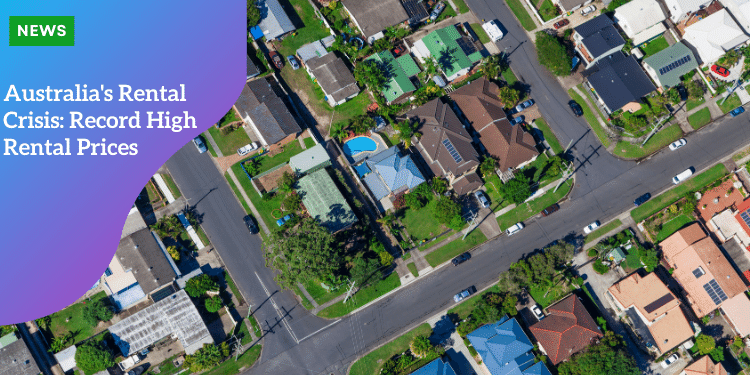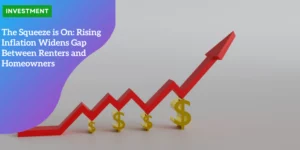Australia’s Rental Crisis: Record High Rental Prices

Understanding Australia’s Rental Crisis
In the realm of housing, Australia is grappling with a rental crisis of unprecedented scale.
With median weekly rents soaring to a record high of $627 after a modest 0.8% rise in April, the squeeze on tenants is becoming increasingly unrelenting.
This figure, sourced from CoreLogic’s latest rental market update, speaks volumes about the current state of affairs for renters across the nation.
The consequences of such a spike in rental prices are far-reaching.
Tenants, especially those on lower incomes, find themselves pushed towards the periphery of city centers.
The affordability crisis forces many to seek accommodation in areas where the cost of living may be lower, but the distance to employment hubs and essential services like healthcare and education is significantly greater.
These suburban shifts not only impact daily commutes but also disrupt community ties and exacerbate social inequalities.
Looking at regional variations, some suburbs around Sydney and Melbourne are experiencing dramatic surges in rental prices.
For instance, Campbelltown, on the outskirts of Sydney, has seen its annual rent growth leap from 9.1% to an astonishing 13.4% within a year leading up to April.
Melbourne’s parts of Casey are not far behind, with increases from 11.7% to 13.1% over the same period.
Such spikes underscore the uneven landscape of Australia’s rental market, where some regions bear the brunt of the crisis more acutely than others.
Amidst these trends, it’s important to consider the broader picture.
While stark increases in certain localities paint a grim outlook, there are areas within the vast Australian landscape where the rental market tells a different story.
For example, rental prices in regions like the Pilbara in Western Australia have seen significant declines from their peaks, despite having surged in previous years.
Such disparities signal a complex and varied national rental landscape, one that requires nuanced understanding and tailored responses.
In light of these realities, it is crucial to comprehend the underlying factors contributing to this crisis, which will be further explored in subsequent sections.
Addressing the rental challenges faced by Australians is not just about immediate relief but also about long-term strategies that can reshape the housing market to be more accommodating for all.
As we continue to navigate through the myriad aspects of Australia’s rental woes, the need for informed discussion and decisive action becomes ever more apparent.
Factors Driving Record High Rental Prices
With the context set on Australia’s rental crisis and its rippling effects throughout the nation, we turn our attention to the underlying causes.
What has propelled the median weekly rent to an all-time high of $627?
The root of this issue can be traced back to a couple of pivotal factors that have inadvertently tightened their grip on the rental market.
Limited Housing Supply Meets Slow Residential Construction
The first piece of this complex puzzle is the sluggish pace of residential construction.
New housing developments are struggling to keep up with demand—a situation exacerbated by a limited housing supply.
This bottleneck in housing availability has been particularly pronounced in areas within 30 to 40 kilometres of city centres.
For instance, suburbs like Campbelltown in Sydney have seen rent growth soar from 9.1% to a staggering 13.4% in just a year, as reported by CoreLogic.
The data starkly illustrates the imbalance between the number of homes needed and those being built—with only 173,000 new dwellings completed, the squeeze on the rental market intensifies.
Net Overseas Migration Adding Fuel to the Fire
Another significant driver behind the surge in rental prices is net overseas migration.
The influx of nearly 550,000 migrants leading up to September has added considerable pressure to an already strained rental market.
These newcomers, many of whom are on temporary visas, are directly competing for the same scarce housing resources, further inflating rental costs.
This demographic shift has not only impacted metropolitan areas but also regional locales as migrants and displaced city dwellers look beyond urban hubs for affordability.
How do these elements converge to create such a challenging environment for tenants across Australia?
The answer lies in the dynamic interplay between supply and demand. With the population swelling from migration and construction dragging its heels, the scales tip decidedly in favour of rising rents.
Existing renters find themselves either priced out or pushed out, often seeking shared accommodation or venturing into less competitive markets on the outer metro fringes or even regional Australia.
In sum, the jigsaw of Australia’s rental woes comes together to form a clear image: a lack of adequate housing supply compounded by a substantial increase in demand due to migration is driving rental prices to record highs.
This situation, while profitable for some, spells difficulty for many Australians seeking a place to call home.
Potential Solutions to Alleviate Australia’s Rental Crisis
With the backdrop of record-high rental prices in Australia, tenants are faced with daunting challenges.
However, within these challenges lie potential solutions that could offer some relief.
One such solution is considering a reduction in net overseas migration to ease the demand pressures on the rental market.
Modulating Migration to Manage Market Pressures
Net overseas migration has significantly contributed to the demand for rental properties.
With nearly 550,000 migrants arriving in the year leading up to September, according to a recent report, the pressure on housing has been relentless.
A potential solution could be to purposefully modulate migration policies to balance the inflow of new residents with the available housing stock.
This strategy could temporarily alleviate the competition for rentals while giving construction efforts time to catch up with the demand.
Regional Relocation for Rental Relief
As affordability becomes a more pressing issue, another solution might be for tenants to consider relocating to more affordable housing markets in regional areas.
The move away from city centers can come with benefits such as reduced living costs and potentially improved quality of life due to less congestion and a closer connection to nature.
While this is not feasible for everyone, for some, it could mean the difference between struggling to make ends meet and having a comfortable lifestyle.
The Ripple Effect on Housing Affordability and the Property Market
The implications of these proposed solutions extend beyond immediate rental relief.
Reducing migration could lead to a broader discussion on sustainable population growth and its impact on infrastructure and services.
Simultaneously, encouraging relocation to regional areas could stimulate local economies but may also risk inflating rents in those regions if not managed carefully.
Furthermore, these shifts must be complemented by policies aimed at increasing the supply of affordable housing, including investment in social housing and incentives for the construction of new dwellings.
It’s crucial to understand that these solutions are not quick fixes but rather part of a comprehensive approach needed to address the complex issue of housing affordability.
As we explore these options, the broader goal remains to establish a more sustainable and inclusive housing system in Australia.
Conclusion and Call-to-Action
As we’ve explored throughout this post, Australia is grappling with a rental crisis of unprecedented scale.
The national median weekly rent has soared to $627, reflecting a broader trend of increasing living costs that is pushing tenants to the fringes of city centers and highlighting the urgent need for proactive measures.
In this conclusion, we’ll summarize the key takeaways from our discussion and highlight the actions we can collectively take to navigate and improve the current situation.
The severity of the rental crisis cannot be understated. With rental prices setting new records and supply falling short of demand, many Australians find themselves in precarious living situations.
The impact is far-reaching, affecting not only those in the tightest financial brackets but a broad swath of the population who are now reconsidering their living arrangements and future prospects within urban and regional areas alike.
Staying informed is crucial. As developments in the rental market continue to unfold, it’s imperative that you keep abreast of the latest trends, reports, and policies that could affect your housing situation.
Knowledge is power, and understanding the factors at play can help tenants make informed decisions and advocate for change.
Whether it’s through reading up-to-date analyses, participating in community discussions, or simply sharing experiences with peers, being engaged with the issue is the first step towards empowerment.
Advocacy for policies promoting housing affordability is more important than ever.
It’s time for citizens to lend their voices to the conversation, pressing policymakers to consider the long-term implications of the rental crisis.
This could include supporting initiatives that incentivize the construction of affordable housing, calling for a review of migration policies to balance demand, or exploring innovative housing models that could provide relief to those in need.
Collective action is the key to unlocking a more sustainable and inclusive housing system.
We all have a role to play—from government officials and property developers to landlords and tenants.
By working together, we can strive to create an environment where rental prices are not only manageable but also fair, ensuring that all Australians have access to safe, secure, and affordable housing.
As we move forward, let us reflect on the values that we hold as a society—the belief in a ‘fair go’ for all.
It’s not just about the numbers; it’s about the lives, dreams, and well-being of millions of Australians.
Let’s channel our collective energies into making meaningful progress, so that the rental market becomes a realm of opportunity, not a source of constant struggle.
In closing, I urge each of you to take these insights and turn them into action.
Talk to your representatives, support housing advocacy groups, and engage with your community.
Together, we can tackle the challenges posed by rising rental prices, and work towards a future where everyone can call Australia home—without the shadow of a rental crisis looming overhead.






